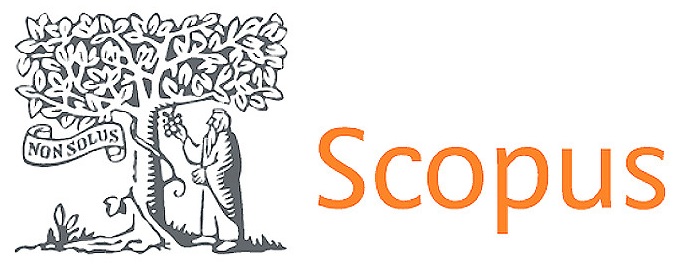Integrating ChatGPT and Generative IA apps in Specialized Text Translation and Post-Editing: An Exploratory Study
DOI:
https://doi.org/10.56294/mw2024624Keywords:
artificial intelligence, machine translation, ChatGPT, post-editing, translation competenceAbstract
This study explores the impact of artificial intelligence (AI) in specialized translation processes, using ChatGPT as the primary tool. The research, with an empirical-exploratory and mixed-method approach, focuses on two objectives: first, to analyze the translation skills and strategies used by students employing ChatGPT to translate texts in legal, medical, and scientific fields; second, to describe the post-editing process, evaluating the techniques used to improve the accuracy and cultural adaptation of the final text. The central research question guiding the study is how ChatGPT influences the development of translation skills and what post-editing strategies students apply to enhance their translations. The methodology involves translation practices with a group of 15 advanced students from the Bachelor’s Degree in Translation at UABC, who translated and post-edited three specialized texts with ChatGPT. These exercises, conducted in three-hour sessions, also included the creation of specific terminological glossaries. A specialized rubric was used to measure translation quality, and Translog-II software recorded the time spent on each activity, assessing the efficiency and accuracy of the process. Preliminary results indicate improved efficiency in the translation process and the final product quality through AI tools and post-editing. In the final survey, students also reported a positive perception of ChatGPT, highlighting its utility in developing specific translation competencies.
References
1. Atarchi K, Elamari A, Marouane, M. The role of artificial intelligence translation tools in academic translation: Faculties of pure sciences as a case study. International Journal of Translation and Interpretation Studies. 2024;4(3):45-62.
2. Alharbi W. The use and abuse of artificial intelligence-enabled machine translation in the EFL classroom: An exploratory study. Journal of Education and E-Learning Research. 2023;10(4):689–701.
3. Cabré MT. Terminology: Domain-specific knowledge representation. En Sinwai C, editor, The Routledge handbook of translation and technology. Routledge; 2020, p. 239-255.
4. Barceló T. Análisis de la subcompetencias lingüística, extralingüística e instrumental en el proceso de enseñanza-aprendizaje de la traducción jurídica y económica (alemán-español) a partir de una experiencia docente. Sendebar. 2017;28(31):31-51.
5. García A, Jiménez M. Avances en la precisión y eficiencia del proceso de traducción en las áreas técnica y científica. Revista de Traducción y Tecnología. 2020;18(4):123-145.
6. Johnson EL, Gómez MS. Integrating AI-based translation tools into translation education: A pilot study. Journal of Educational Technology & Society. 2022;25(1):45-60.
7. Wang LH, Schmidt GN. The impact of AI and machine translation on translation pedagogy: A review of recent trends. Computers & Education. 2024;78:101-115.
8. Silva LR, Baxter KL. Training translators in the era of AI: New challenges and opportunities. Journal of Translation Technology & Education. 2024;30(2):89-104.
9. García A. Post-editing in machine translation: A comprehensive review. Translation Studies Journal. 2020;14(3):55-67.
10. Bertoli R, Gavioli, L. The role of post-editing in machine translation: Insights from a study on the quality and productivity of professional translators. Translation Studies. 2021;14(3):346-368.
11. Koehn P. (2020). The importance of post-editing in neural machine translation: A survey of current practices and challenges. Journal of Translation Technology. 2020;12(2):45-64.
12. Choi H, Kim K. The Impact of AI on Translation Quality: A Comparative Study of ChatGPT and Traditional MT Systems. Journal of Machine Translation. 2023;37(2):112-130.
13. Smith J, Wang L. Evaluating the Effectiveness of ChatGPT for Professional Translation Tasks. International Journal of Translation Studies. 2023;29(4):245-261.
14. Miller R, Thompson A. The Role of ChatGPT in Modern Translation Practices: Opportunities and Challenges. Translation Technology Today. 2024;11(3):202-220.
15. O’Connor P, Zhang L. Limitaciones y potencial de ChatGPT en traducción automática: Un análisis crítico. Journal of Machine Translation and AI Integration. 2024;15(14):101-118.
16. Khairuddin Z, Shahabani NS, Ahmad SN, Ahmad AR, Zamri NA. Students’ perceptions on the artificial intelligence (AI) tools as academic support. Malaysian Journal of Social Sciences and Humanities. 2024;9(11):e003087.
17. Wang L, Xu S, Liu K. Understanding students' acceptance of ChatGPT as a translation tool: A UTAUT model analysis. ArXiv preprint arXiv:2406.06254; 2024.
18. Le PTN. Students' perceptions of the AI technology application in English writing classes. Proceedings of the AsiaCALL International Conference. 2023;4:45–62.
19. Burkhard M. Student perceptions of AI-powered writing tools: Towards individualized teaching strategies. Paper presented at the International Conference on Cognition and Exploratory Learning in Digital Age (CELDA); 2022.
20. Andrade J, Cortez J. La Traducción de Coloquialismos en la Modalidad: Perspectiva Sociocultural. Revista de Lenguas Modernas. 2022;(36):1–24.
21. Andrade J, Cortez J. La traducción de textos especializados. Análisis correlacional de la subcompetencia instrumental y extralingüística en estudiantes de posgrado. Verbum et Lingua: Didáctica, Lengua y Cultura. 2024;(23):65–84.
Published
Issue
Section
License
Copyright (c) 2024 Jahiro Samar Andrade Preciado , Rubén González Vallejo (Author)

This work is licensed under a Creative Commons Attribution 4.0 International License.
The article is distributed under the Creative Commons Attribution 4.0 License. Unless otherwise stated, associated published material is distributed under the same licence.






